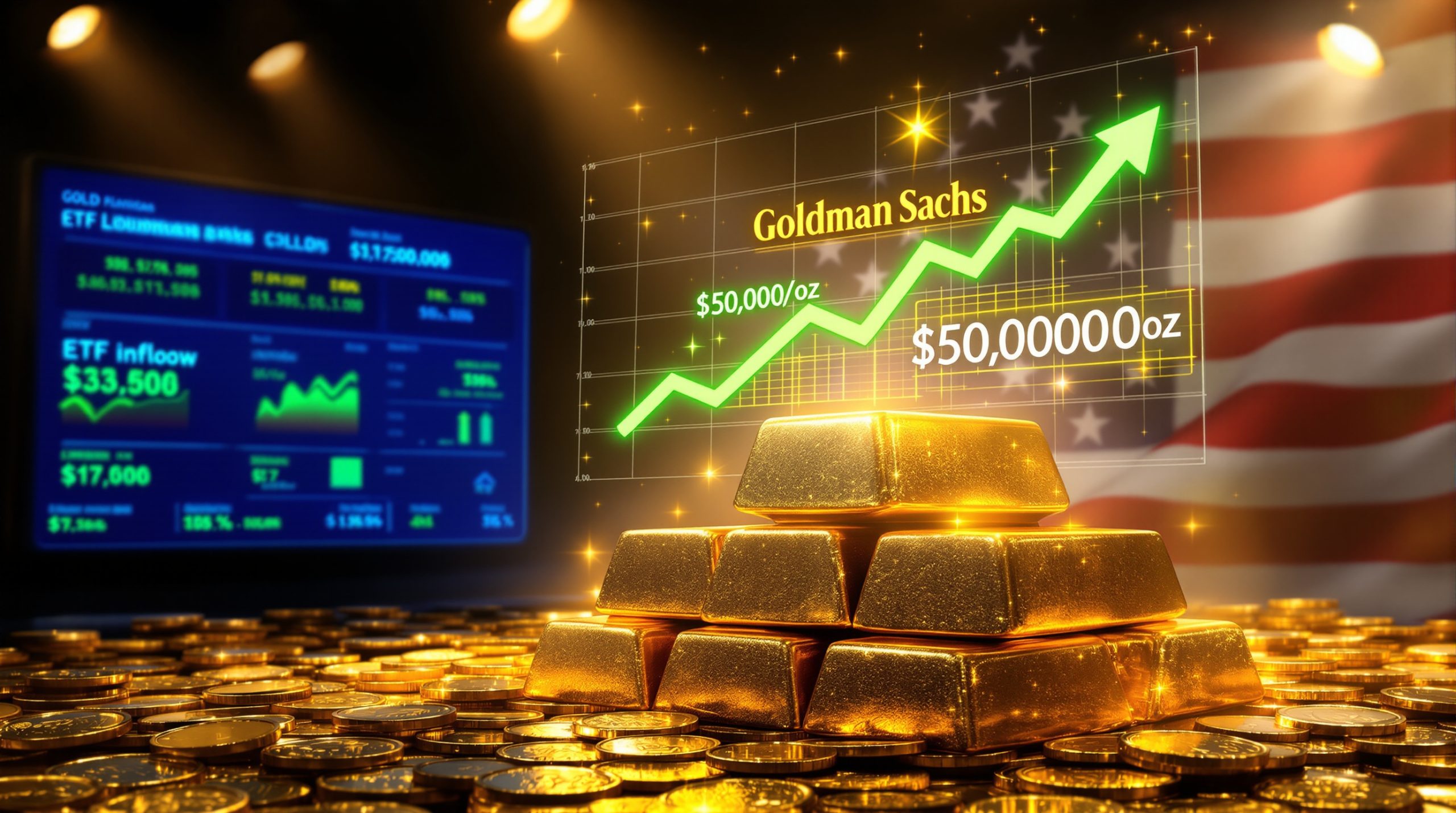What's Behind Gold's Recent Price Surge?
Gold has captured global attention with its extraordinary price rally, breaking through the $3,000 per ounce milestone for the first time in March 2024. This surge represents a historic $3,000 surge in precious metals markets, with gold continuing its upward momentum beyond $3,500 per ounce in recent weeks. What makes this rally particularly remarkable is not just the achievement of new price records, but the unprecedented velocity of the advance compared to previous bull markets.
Unlike the 2000-2011 climb, when gold rose steadily from under $300 to over $1,800 over an eleven-year period, the current rally has compressed similar percentage gains into a fraction of that time. According to the World Gold Council's Q1 2024 report, gold averaged $3,045 per ounce during the first quarter, representing one of the steepest three-month climbs on record.
Understanding Gold's Historic Price Movement
The recent price action has fundamentally altered market psychology. Prior resistance levels that once seemed formidable have been decisively breached, with sub-$2,000 prices now appearing like distant history despite being the reality just months ago. This psychological shift has created a self-reinforcing momentum that continues to propel prices higher.
What's particularly notable is how gold has maintained its upward trajectory despite traditional headwinds. Even during periods of dollar strength and relatively high interest rates, gold has demonstrated remarkable resilience, suggesting deeper structural forces at work in the market.
Key Factors Driving the Current Gold Rally
Central Bank Purchasing: One of the most significant drivers has been persistent central bank demand. According to the World Gold Council's 2023 Annual Report, central banks acquired over 1,000 tons annually for three consecutive years (2021-2023), with 2023 purchases reaching 1,037 tons. China led this trend with additions of approximately 225 tons in 2023 alone, as reported by the People's Bank of China.
"Central banks are diversifying reserves away from the U.S. dollar due to fiscal concerns," notes Krishan Gopaul, Senior Analyst at the World Gold Council, highlighting a fundamental shift in reserve management strategies.
Inflation Concerns: Despite the Federal Reserve's aggressive monetary tightening cycle, inflation has proven stubbornly persistent. The U.S. Bureau of Economic Analysis reported that the February 6-month annualized core PCE (the Fed's preferred inflation gauge) reached 3.4%, the highest reading since mid-2023. These upward revisions to inflation data have undermined confidence in price stability.
Geopolitical Tensions: Trade conflicts and regional instability have accelerated safe-haven demand. Gold surged approximately 11% (from $3,150 to $3,500) in less than three weeks following the April 2024 U.S.-China tariff announcements, according to LBMA Gold Price PM Fix data. With a July 8th deadline for reciprocal tariffs on $200 billion of goods approaching, markets are pricing in continued uncertainty.
Debt and Dollar Concerns: The U.S. debt-to-GDP ratio reached 123% in Q4 2023 according to U.S. Treasury reports, compared to just 35% in 1980. This dramatic increase has fueled concerns about long-term dollar debasement and fiscal sustainability. The Congressional Budget Office projects a budget deficit of $1.6 trillion for fiscal year 2024, further intensifying these worries.
Rate Cut Expectations: Markets have been positioning ahead of anticipated interest rate cuts, with the CME FedWatch Tool indicating a 56% probability of a 25 basis point cut in June 2024 (as of May 2025). This expectation of monetary easing typically supports non-yielding assets like gold.
What Could Reverse Gold's Upward Trajectory?
While the bullish case for gold remains compelling, prudent investors must consider potential catalysts that could halt or reverse the rally. Four primary forces warrant particular attention for their capacity to change gold's trajectory.
Force #1: Unexpected Interest Rate Policy Shifts
The Federal Reserve faces a challenging balancing act. Recent economic data shows persistent inflationary pressures despite previous monetary tightening. The Bureau of Labor Statistics reported U.S. unemployment at 3.8% in April 2024, hovering near 50-year lows and suggesting continued labor market strength.
Fed Chair Jerome Powell noted in his March 2024 press conference that "sticky inflation components, like housing, may delay Fed rate cuts." This cautious stance reflects growing concern that inflation may not return to target as quickly as previously hoped.
The technical relationship between interest rates and gold prices is well-established. Rising real yields (interest rates adjusted for inflation) increase gold's opportunity cost, as non-yielding assets become less attractive. According to an IMF Working Paper on "Gold and Real Interest Rates" (2020), for every 1% rise in real yields, gold historically declines approximately 8%.
A potential scenario that could severely impact gold would involve the Fed maintaining higher rates for longer than markets currently anticipate—or even implementing additional hikes if inflation accelerates. Fed Governor Christopher Waller signaled this possibility, stating, "We're prepared to maintain restrictive policy if inflation persists" (Bloomberg, April 2024).
The 2022 rate hiking cycle provides a sobering example: gold dropped 18% between March and October 2022 as the Fed raised rates by 425 basis points, according to Federal Reserve Economic Data (FRED). Even hawkish communication without actual rate increases could trigger significant gold price corrections by strengthening the dollar and boosting real yields.
Force #2: Reduction in Geopolitical Risk Premium
Geopolitical tensions have added a substantial risk premium to gold prices in 2024. According to CBOE's Gold Volatility Index, geopolitical risk accounts for approximately 15% of gold's 2024 premium. The metal's 11% surge following April's trade tariff announcements demonstrates this sensitivity.
"Gold's sensitivity to tariffs reflects broader macroeconomic uncertainty," explains economist Nouriel Roubini. "Markets don't just price current risk—they price the potential for escalation."
However, history shows this risk premium can dissipate rapidly when tensions ease. Following the 2019 U.S.-China Phase One trade deal, gold fell 6% in just two months as capital flowed back toward risk assets, according to Kitco historical charts.
A potential scenario for gold price rise correction would involve diplomatic breakthroughs, softening rhetoric, or tariff reductions ahead of the July 8th reciprocal tariff deadline. Even partial resolutions could trigger significant profit-taking in gold markets as investors redirect capital toward equities, emerging markets, and yield-generating assets.
Beyond trade tensions, the Iran-Israel conflicts in early 2024 added approximately $100 per ounce to gold's price, according to Reuters analysis. Any de-escalation in regional conflicts could similarly reduce safe-haven demand.
Force #3: Changes in Central Bank Buying Patterns
Central banks represent "price-inelastic" buyers whose consistent demand has provided crucial support for gold markets since the 2008 financial crisis. Their purchasing decisions typically reflect long-term strategic considerations rather than short-term price sensitivity.
According to the IMF's "Currency Composition of Official Foreign Exchange Reserves" report, central banks now hold approximately 17% of global gold reserves. PBOC Governor Yi Gang emphasized this strategic approach, noting that "gold is a long-term hedge against dollar volatility" (South China Morning Post, 2023).
However, even a temporary pause in central bank acquisition could signal a major sentiment shift. Following the 2012 U.S. fiscal cliff resolution, gold dropped 4% as sovereign debt concerns temporarily abated, according to FRED data.
Several factors could alter central bank strategy:
- Significant U.S. fiscal reforms that restore confidence in the dollar
- Congressional action to cap deficits and establish sustainable debt trajectories
- Policy shifts in major gold-purchasing nations like China or Russia
- Implementation of alternative reserve assets (such as the BRICS nations' exploration of a gold-backed trade currency)
The market impact could be substantial even without central banks actively selling reserves. The mere absence of their consistent buying pressure could create a significant supply-demand imbalance.
Force #4: Systemic Responses to Gold's Message
Gold functions as an economic indicator reflecting systemic confidence. Rapidly rising prices signal potential instability in financial markets, often prompting regulatory or institutional responses designed to manage this signaling effect.
The CME Group raised gold futures margin requirements by 18% in April 2024, increasing the capital needed to maintain positions. According to a 2018 study in the Journal of Futures Markets, a 20% margin increase typically reduces trading volume by 12%, effectively cooling speculative fervor.
Historical precedents for system intervention include:
- The Bank of England's sale of 400 tons of gold between 1999-2002, which pressured prices during that period
- The collapse of the Hunt Brothers' silver corner in 1980 after COMEX implemented dramatic margin hikes
- Coordinated central bank gold sales under various agreements since the 1990s
- The European Central Bank's June 2024 statement on "monitoring commodity volatility"
Former CFTC Chair Timothy Massad noted in a Wall Street Journal interview that "regulatory tools can temper speculative excess" without requiring direct market manipulation. Even subtle friction can slow momentum and trigger corrective price action in overheated markets.
How High Could Gold Prices Go?
Evaluating Gold's Price Ceiling
Recent price action has redefined previous psychological barriers, with UBS forecasting $4,000 per ounce by Q4 2025 in their latest Gold Outlook (May 2024). Citi's Commodity Report similarly predicts $4,000 by 2025 amid persistent debt concerns.
The fundamental case for continued appreciation rests on several metrics:
- Debt Sustainability: U.S. debt-to-GDP at 123% versus 35% in 1980 (IMF World Economic Outlook)
- Reserve Diversification: Central banks drove 23% of 2023 gold demand (World Gold Council)
- Currency Debasement: M2 money supply expansion outpacing GDP growth
- Structural Inflation: Reshoring, deglobalization, and energy transition costs
However, technical measures suggest caution. Gold's 30-day volatility reached 22% in May 2024 versus its 15% long-term average, according to Bloomberg's GVZ Index, indicating potential overheating.
Balancing Bullish and Bearish Factors
Ray Dalio of Bridgewater Associates warns that "gold's ceiling depends on debt sustainability," highlighting how fiscal policy remains central to gold's trajectory. The ongoing expansion of SPDR Gold Trust holdings (up 12% year-to-date according to State Street Global Advisors) suggests continuing institutional confidence.
Higher prices inherently increase the potential magnitude of corrections, particularly as gold reaches unprecedented levels. Historical precedents like the 1980 peak (followed by a 20-year bear market) and the 2011-2015 correction (down 45%) demonstrate that even strong bull markets experience significant pullbacks.
Investors should remain cognizant that price volatility typically increases as assets reach new all-time highs analysis, requiring more sophisticated risk management approaches.
How Should Investors Approach Gold in This Environment?
Strategic Considerations for Gold Investors
The extraordinary rally creates both opportunity and risk for gold investors. SPDR Gold Trust (GLD) has returned 18% year-to-date versus the S&P 500's 8%, according to Yahoo Finance (May 2025), highlighting gold's recent outperformance.
Mohamed El-Erian of Allianz advises investors to "allocate 5-10% to gold for diversification," recognizing the metal's role in portfolio construction. This measured approach acknowledges gold's benefits without overconcentrating in a single asset class.
A diversified approach to gold exposure offers several advantages:
- Physical gold: Provides direct ownership without counterparty risk
- ETFs: Offers liquidity and convenience (e.g., SPDR Gold Trust)
- Mining stocks: Provides operational leverage to gold prices (Newmont Corporation reported 25% EBITDA growth in Q1 2024)
- Options/futures: Allows for strategic positioning with defined risk parameters
Investors should consider position sizing appropriate to overall portfolio risk tolerance, particularly given gold's recent volatility. Technical indicators suggesting potential overbought conditions warrant careful entry strategies, such as dollar-cost averaging rather than lump-sum investments.
Risk Management Approaches
Several tactical approaches can help investors navigate gold's current volatility:
Trailing Stop Orders: A 10% trailing stop-loss reduced losses during the 2008 financial crisis by approximately 30%, according to a 2009 study in the Journal of Portfolio Management. This approach allows for continued participation in upside momentum while limiting downside exposure.
Options Strategies: Collar strategies (buying protective puts while selling covered calls) can establish predefined risk parameters. The CBOE Gold Options Guide details how these approaches can be particularly effective during periods of elevated volatility.
Gradual Position Building: Rather than making large one-time allocations, investors might consider scaling into positions to reduce timing risk. This approach proved effective during the volatile 2011-2013 period.
Cash Reserves: Maintaining liquidity to capitalize on potential pullbacks allows investors to average down positions during corrections. Historical gold bull markets have typically included multiple 10-15% corrections even during strong uptrends.
Frequently Asked Questions About Gold's Price Movement
What has been gold's historical performance during interest rate hikes?
Gold typically faces headwinds during rate hiking cycles as opportunity costs increase and the dollar strengthens. During the 1980-1981 Volcker rate hikes, gold fell approximately 28% according to Federal Reserve historical data. However, if rate hikes occur amid high inflation, gold can sometimes maintain value as real yields (nominal rates minus inflation) remain negative or low.
How do central banks impact the gold market?
Central banks influence gold prices through direct purchases, policy signals, and reserve management decisions. The World Gold Council reports that central banks drove 23% of total gold demand in 2023, providing crucial price support. Their buying establishes an effective price floor and signals concerns about traditional reserve currencies, particularly the U.S. dollar.
Could gold reach $4,000 per ounce in the near term?
While predicting specific price targets involves considerable uncertainty, several major financial institutions see potential for gold to reach $4,000. UBS forecasts this level by Q4 2025, while Citi's commodity analysts cite continuing debt concerns as a primary driver. However, the pace of increase seen in early 2024 is likely unsustainable, and investors should expect increased volatility as prices reach new records.
How does gold perform during trade wars?
Historically, gold benefits significantly from trade tensions as they create economic uncertainty, potentially weaken currencies, and often lead to accommodative monetary policy to offset economic impacts. During the 2018-2019 U.S.-China trade tensions, gold appreciated approximately 24% according to Kitco historical data, demonstrating its effectiveness as a hedge against geopolitical and economic uncertainty.
The current market performance surge demonstrates how gold continues to thrive amid various economic challenges. Additionally, many investors are increasingly turning to gold as an inflation hedge dynamics strategy, further supporting the price forecast insights that suggest continued strength.
Disclaimer: This article contains market analysis and price projections that are speculative in nature. Past performance is not indicative of future results. Investors should conduct their own research and consult with financial advisors before making investment decisions. Gold prices are subject to substantial volatility and may experience significant corrections even during bull markets.
Interested in Capitalising on the Next Major Gold Discovery?
Discovery Alert's proprietary Discovery IQ model provides real-time alerts on significant ASX gold discoveries, turning complex mineral data into actionable insights for investors. Explore why major mineral discoveries can lead to substantial market returns by visiting Discovery Alert's dedicated discoveries page and position yourself ahead of the market.




